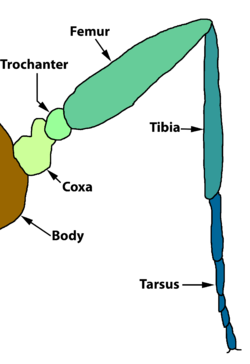| Sericomyia carolinensis | |
|---|---|
| Scientific classification | |
| Kingdom: | Animalia |
| Phylum: | Arthropoda |
| Class: | Insecta |
| Order: | Diptera |
| Superfamily: | Syrphoidea |
| Family: | Syrphidae |
| Genus: | Sericomyia |
| Species: | S. carolinensis |
| Binomial name | |
| Sericomyia carolinensis Metcalf, 1917 | |
| Synonyms | |
Cinxia carolinensis | |
Sericomyia carolinensis [1] [2] (also called the Two-spotted Pond Fly), is a rare species in the family Syrphidae, found in the Southeastern part of the United States. It is distinguished by its all yellow face, single pair of small narrow yellow spots, and yellow pilose scutellum. Adults noted feeding on pear blossoms. The larval stage is unknown but is likely a "rat tailed" type larvae inhabiting nutrient rich waters, typical for the genus Sericomyia. [3] [4]

